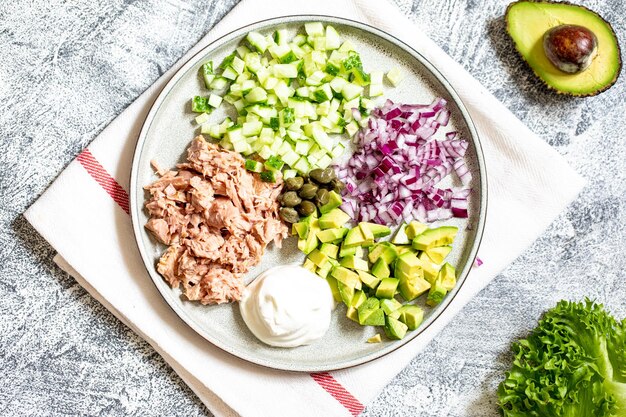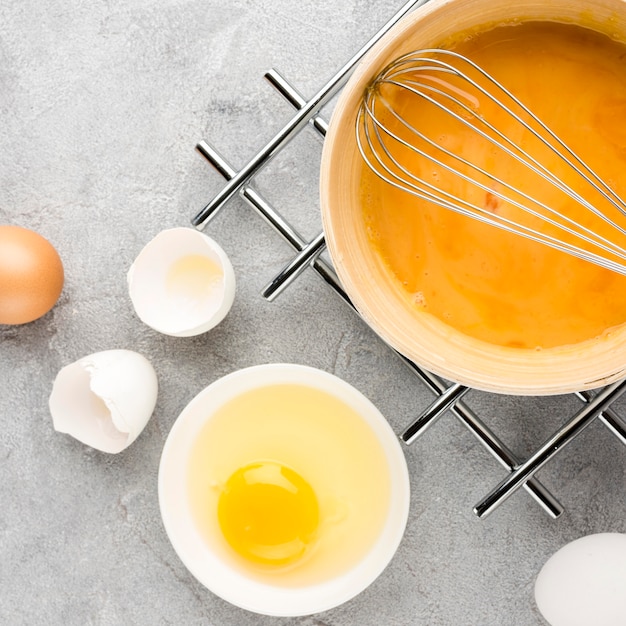Authentic and Delicious Turkish Lahmacun Recipe Wrap A Burst of Flavors in Every Bite!
Embark on a culinary adventure as we delve into the wonders of Anatolian gastronomy, unveiling a mouthwatering dish that will transport your taste buds to the vibrant and diverse Turkish cuisine. In this tantalizing journey, we will unravel the secrets behind a beloved Anatolian flatbread creation that combines savory flavors, delicate textures, and a medley of aromatic spices.
Brace yourself for an exquisite food experience as we present the tantalizing Turkish Lahmajoun Wrap. Known for its unique combination of tangy and spicy flavors, this traditional Anatolian dish has captivated both locals and food enthusiasts worldwide. Its origins date back centuries, making it a testament to the rich cultural heritage that Anatolia has to offer.
Picture a thin, golden-brown flatbread adorned with a luscious array of ingredients. Tender ground meat, bursting with flavors reminiscent of the region’s vibrant spice markets, is generously spread across the surface. Beautifully enhanced with fresh herbs, succulent tomatoes, and crisp vegetables, every bite offers a symphony of textures and tastes that fuse harmoniously.
Indulge in the irresistible blend of bold flavors and subtle nuances that the Turkish Lahmajoun Wrap encapsulates. The delicate balance between succulent meat and zesty vegetables creates a remarkable explosion of flavors that lingers on your palate, leaving you yearning for more. Whether enjoyed as a quick snack on the go or savored with loved ones during a leisurely feast, this Anatolian delight promises to enchant even the most discerning of food connoisseurs.
Join us on this culinary voyage as we unlock the secrets of the Turkish Lahmajoun Wrap, sharing both the recipe and the passion behind it. Let your senses be awakened and your palate be gratified by this beloved Anatolian flatbread.
How to Make a Scrumptious Wrap Inspired by Traditional Anatolian Flatbread
Ever wanted to recreate the unique flavors of Turkish cuisine in the comfort of your own kitchen? Look no further! In this section, we will guide you through the process of making a mouthwatering wrap inspired by the traditional Anatolian flatbread. This recipe combines the essence of Turkish Lahmajoun with a homemade twist, allowing you to enjoy a delicious, aromatic meal bursting with Mediterranean flavors.
Gather the Ingredients
To start your culinary adventure, assemble the following ingredients:
- Ground lamb or beef
- Tomatoes
- Onions
- Garlic
- Parsley
- Red bell peppers
- Ground cumin
- Paprika
- Cayenne pepper
- Cinnamon
- Olive oil
- Water
- Flour
- Salt
Prepare the Flavorful Filling
Begin by finely dicing the tomatoes, onions, garlic, and parsley. Sauté them in a pan with a drizzle of olive oil until they soften and release their aromas. Next, add the ground lamb or beef, breaking it apart with a spatula as it cooks. Season the mixture with a combination of ground cumin, paprika, cayenne pepper, and just a hint of cinnamon to lend it that extra Anatolian flair. Let the filling simmer until the meat is cooked through and the flavors have melded together beautifully.
While the filling cooks, prepare the dough by combining flour, water, and salt in a mixing bowl. Knead the dough until it becomes smooth and elastic, then allow it to rest for a short while. Once rested, divide the dough into small portions and roll them out into thin circles, mimicking the shape of traditional flatbread.
Now, comes the exciting part – assembling the wrap! Take a portion of the dough and spread a generous amount of the flavorful filling onto it. Fold the sides of the dough over the filling, creating a neat, compact package. Repeat this process with the remaining dough and filling until all the wraps are assembled.
Cook to Perfection
Heat a non-stick pan or griddle over medium heat and carefully place the wraps onto it. Cook each side until it turns golden brown and slightly crisp, creating a delicious contrast to the tender filling within. Once cooked, remove the wraps from the heat and serve them warm, allowing the enticing aromas to fill the room.
This delightful homemade Anatolian flatbread wrap is ideal for a quick lunch or a delightful dinner. Its richly spiced filling and soft, yet slightly crunchy exterior will transport you to the heart of Turkey, all from the comfort of your own kitchen. So, grab your apron and get ready to embark on a culinary journey that is both satisfying and unforgettable!
The Origins of Lahmajoun
The rich history of Lahmajoun, a popular dish enjoyed in various regions around the world, provides a fascinating glimpse into the culinary traditions of the Mediterranean and the Levant. This mouthwatering treat, known for its thin dough topped with a flavorful meat mixture and baked to perfection, has its roots deeply entrenched in the ancient cuisines of the Anatolian region.
The origins of Lahmajoun can be traced back to ancient times, where the combination of simple ingredients like flour, meat, and spices was a staple in the diets of nomadic tribes and civilizations of the past. This delectable dish has evolved over the centuries, influenced by the diverse cultures and historical events that have shaped the Anatolian region.
Throughout history, Anatolia has been a melting pot of civilizations, with trade routes connecting east and west, resulting in a fusion of flavors and culinary techniques. Lahmajoun, with its unique blend of spices and textures, reflects this dynamic interplay of cultures, showcasing the gastronomic influence of the Byzantine, Ottoman, and Arab civilizations.
While Lahmajoun has become synonymous with Turkish cuisine, its popularity has spread far beyond the borders of Anatolia. In the Levant, it is known as “sfiha” and is a beloved street food in countries like Syria and Lebanon. Similarly, in Armenia, it is called “lahmacun” with slight variations in ingredients and preparation methods.
Today, Lahmajoun continues to delight food enthusiasts around the globe, with its savory flavors and versatility. Whether enjoyed as a quick snack, a main course, or as part of a festive meal, this Anatolian delicacy stands as a testament to the enduring legacy of cultural exchange and the art of culinary craftsmanship.
Ingredients for the Traditional Anatolian Bread
To prepare the traditional Anatolian bread, a variety of wholesome ingredients are combined to create a flavorful and versatile dough. These ingredients come together to form a base for the delicious Turkish Lahmajoun Wrap.
Flour: The main component of the dough, flour provides structure and texture to the Anatolian bread. It is essential to choose a high-quality flour to achieve the desired results.
Yeast: Yeast is responsible for leavening the dough and giving it a light and airy consistency. It is important to use fresh yeast for optimal results.
Water: Water is the liquid used to hydrate the dough and activate the yeast. It is essential to use warm water to help the yeast activate properly.
Salt: Salt adds flavor to the bread and helps to balance the sweetness of the other ingredients. It also plays a role in controlling the fermentation process and strengthening the gluten structure.
Sugar: Sugar is used as a sweetener to enhance the flavor of the bread and promote browning during baking. It also provides food for the yeast, helping it to multiply and ferment the dough.
Olive Oil: Olive oil is a traditional ingredient in Anatolian cuisine and adds richness and moisture to the bread. It also contributes to the overall flavor profile of the finished dish.
Herbs and Spices: Various herbs and spices can be added to the dough to infuse it with aromatic flavors. Common choices include oregano, thyme, cumin, and red pepper flakes.
Onions and Garlic: Finely chopped onions and garlic can be incorporated into the dough to add depth and complexity to the flavor. They also contribute to the overall texture of the bread.
By combining these ingredients in the right proportions and following the traditional Anatolian baking techniques, you can create a delectable bread that serves as the foundation for the mouthwatering Turkish Lahmajoun Wrap.
Step-by-Step Instructions for Making Lahmajoun
In this section, we will guide you through the process of preparing a traditional Anatolian flatbread known as Lahmajoun. Follow these step-by-step instructions to create a delicious homemade meal that combines flavorful meat, herbs, and spices.
1. Begin by preparing the dough. Combine flour, water, yeast, and a pinch of salt in a mixing bowl. Knead the mixture until it forms a smooth and elastic dough. Allow it to rest for about an hour, covered with a clean kitchen towel.
2. While the dough is resting, prepare the filling. In a separate bowl, mix ground meat (choose your favorite type), finely chopped onions, minced garlic, fresh parsley, tomato paste, paprika, cumin, and a touch of olive oil. Season with salt and pepper to taste. Stir well to combine all the ingredients.
3. Preheat the oven to a high temperature. Divide the dough into equal-sized portions and roll each one into a thin round shape on a lightly floured surface. Place the rolled dough on a baking sheet lined with parchment paper.
4. Spread a generous amount of the prepared filling onto each dough round, leaving a small border around the edges. Make sure the filling is evenly distributed and covers the entire surface.
5. Bake the lahmacuns in the preheated oven for about 10-12 minutes or until the edges of the dough are golden brown and crispy. Remove from the oven and let them cool slightly before serving.
6. Lahmajoun can be enjoyed in various ways. You can fold each flatbread in half like a wrap, or roll it up tightly. Serve with a squeeze of lemon juice and fresh herbs, such as mint or parsley, for an extra burst of flavor.
By following these simple instructions, you can create a mouthwatering lahmacun that captures the essence of Anatolian cuisine. Enjoy the aromatic blend of spices and the satisfying combination of textures in this traditional dish!
Serving and Pairing Suggestions
When it comes to serving Turkish Lahmajoun Wraps, there are plenty of options to explore. Whether you’re hosting a casual gathering, looking for a quick yet satisfying meal, or wanting to impress your guests with a unique dish, these suggestions will help you create a memorable dining experience.
Flavorful Accompaniments
Pair your Turkish Lahmajoun Wraps with an array of flavorful accompaniments to enhance the taste and texture of the dish. Fresh and tangy options like a cucumber and tomato salad with lemon dressing, or a zesty yogurt sauce with garlic and herbs, can add a refreshing touch. For those who enjoy a bit of heat, consider serving a spicy pepper salsa or a chili-infused garlic sauce on the side.
Vibrant Side Dishes
Complement the Lahmajoun Wraps with vibrant and colorful side dishes that bring a balance of flavors and textures to the table. A bright and refreshing tabbouleh salad with its combination of bulgur, parsley, tomatoes, and lemon juice can provide a citrusy contrast. Alternatively, a roasted vegetable medley or a mediterranean-style couscous salad can add depth to the meal with their warm, earthy flavors.
Pro tip: For an added twist, consider serving the lahmacun wraps alongside a creamy hummus dip for a delightful combination of creamy and savory.
With these serving and pairing suggestions, you can transform your Turkish Lahmajoun Wraps into a complete and satisfying meal. Get creative, experiment with different flavors, and enjoy the vibrant tastes of Anatolian cuisine!
Variations and Adaptations
Exploring different ways to enjoy this traditional Anatolian dish opens up a world of culinary possibilities. By experimenting with various ingredients and techniques, you can create unique variations of the classic Turkish lahmacun wrap. Whether you’re looking to add a twist to the flavors or adapt the recipe to suit dietary preferences, there are countless options to explore.
One way to add a personal touch to your lahmacun wrap is by experimenting with different meat options. While the traditional recipe calls for minced lamb or beef, you could try substituting it with ground chicken, turkey, or even vegetarian alternatives like tofu or tempeh. This allows you to cater to different dietary restrictions or simply explore different flavor profiles.
Another aspect to consider when adapting this recipe is the choice of vegetables. While the classic lahmacun wrap typically includes ingredients like onions, bell peppers, and tomatoes, you can get creative and include a wider variety of vegetables. Consider adding zucchini, eggplant, or mushrooms for additional texture and taste.
For those looking to explore alternative flavors, consider experimenting with different spice blends or herbs. While the traditional lahmacun wrap is already packed with delicious spices like cumin, paprika, and chili flakes, you can customize the seasoning to suit your taste preferences. Adding herbs like parsley, cilantro, or mint can also provide a fresh and aromatic twist to the dish.
If gluten-free options are a concern, you can adapt the lahmacun wrap by using alternative types of flour such as chickpea flour, almond flour, or a gluten-free all-purpose flour blend. This allows individuals with gluten sensitivities or preferences to still enjoy this flavorful dish.
Lastly, consider exploring different serving styles for your lahmacun wrap. While the traditional way is to roll it up into a wrap, you can also serve it open-faced, like a pizza, or even as a topping for a salad. The versatility of the dish allows you to get creative and adapt it to various meal settings or personal preferences.
With so many variations and adaptations to explore, the Turkish lahmacun wrap can be a canvas for culinary creativity. By incorporating different ingredients, flavors, and techniques, you can create a truly unique and personalized version of this beloved Anatolian flatbread.
Tips and Tricks for the Perfect Lahmajoun
When it comes to creating the ultimate Lahmajoun, there are a few tips and tricks that can take your homemade Anatolian flatbread to the next level. Whether you’re a seasoned chef or just starting out in the kitchen, these techniques will help you achieve a delicious result without fail.
- Start with the dough: The key to a perfect Lahmajoun lies in the dough. Use a combination of all-purpose flour, yeast, salt, and water to create a soft and pliable dough. Kneading the dough thoroughly will ensure its elasticity, allowing it to rise properly during the baking process.
- Master the rolling technique: Rolling out the dough to a thin and even consistency is crucial for a balanced texture and taste. A good tip is to dust both your working surface and rolling pin with flour to prevent sticking, making it easier to achieve the desired thickness.
- Choose the right toppings: The traditional Lahmajoun toppings consist of a flavorful mixture of ground meat, vegetables, and spices. Experiment with different combinations to find your favorite blend of flavors. Remember to finely chop the ingredients to ensure even distribution and easier rolling.
- Preheat the oven and baking surface: To achieve a perfectly crispy and golden flatbread, preheat your oven to a high temperature, usually around 500°F (260°C). Additionally, use a preheated baking stone or a pizza pan to ensure even heat distribution and a crispy crust.
- Maintain a balance of flavors: To enhance the taste of your Lahmajoun, make sure to balance the flavors by using the right amount of spices and seasonings. A pinch of red pepper flakes will add a subtle kick, while a sprinkle of fresh herbs like parsley or mint will provide a refreshing finish.
- Don’t forget the finishing touches: After baking, garnish your Lahmajoun with a squeeze of lemon juice and a drizzle of pomegranate molasses for an extra burst of tanginess. Serve it folded or rolled up, and enjoy it as an appetizer, a main course, or a quick snack on the go.
By following these tips and tricks, you’ll be able to create a mouthwatering Lahmajoun that captures the essence of Anatolian cuisine. Get ready to impress your family and friends with your homemade flatbread skills!




